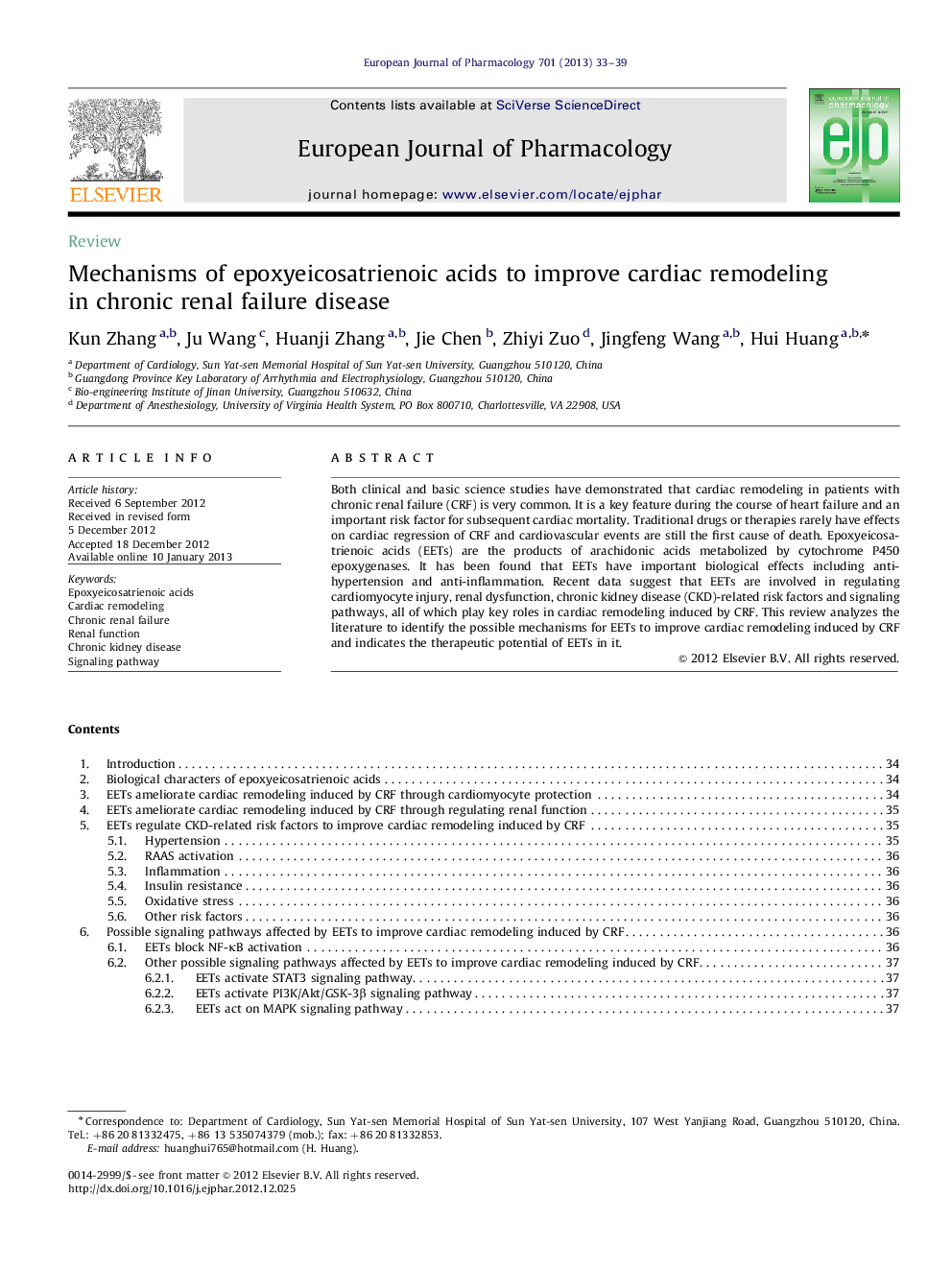| Article ID | Journal | Published Year | Pages | File Type |
|---|---|---|---|---|
| 5828779 | European Journal of Pharmacology | 2013 | 7 Pages |
Both clinical and basic science studies have demonstrated that cardiac remodeling in patients with chronic renal failure (CRF) is very common. It is a key feature during the course of heart failure and an important risk factor for subsequent cardiac mortality. Traditional drugs or therapies rarely have effects on cardiac regression of CRF and cardiovascular events are still the first cause of death. Epoxyeicosatrienoic acids (EETs) are the products of arachidonic acids metabolized by cytochrome P450 epoxygenases. It has been found that EETs have important biological effects including anti-hypertension and anti-inflammation. Recent data suggest that EETs are involved in regulating cardiomyocyte injury, renal dysfunction, chronic kidney disease (CKD)-related risk factors and signaling pathways, all of which play key roles in cardiac remodeling induced by CRF. This review analyzes the literature to identify the possible mechanisms for EETs to improve cardiac remodeling induced by CRF and indicates the therapeutic potential of EETs in it.
Graphical abstractCardiomyocyte injury, renal dysfunction, chronic kidney disease (CKD)-related risk factors and signaling pathways are all involved in the process of cardiac remodeling induced by chronic renal failure (CRF). EETs upregulation may be a potential therapy to improve CRF-induced cardiac remodeling by regulating cardiomyocyte injury, renal function, CKD-related risk factors and signaling pathways.Download high-res image (178KB)Download full-size image
